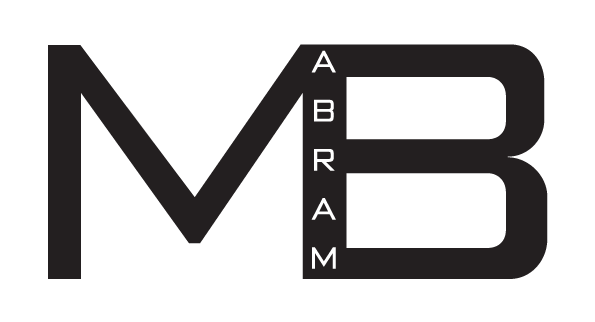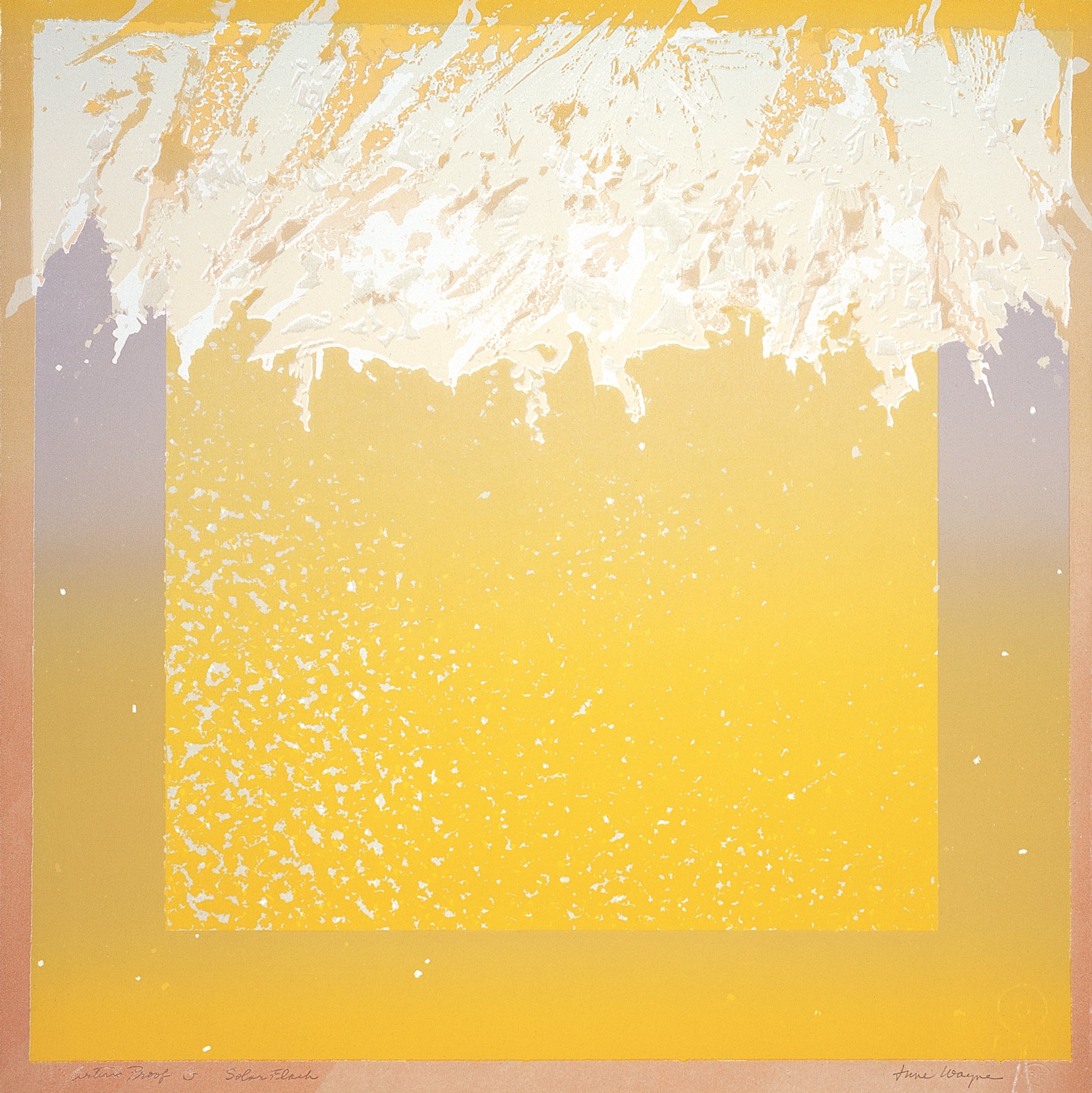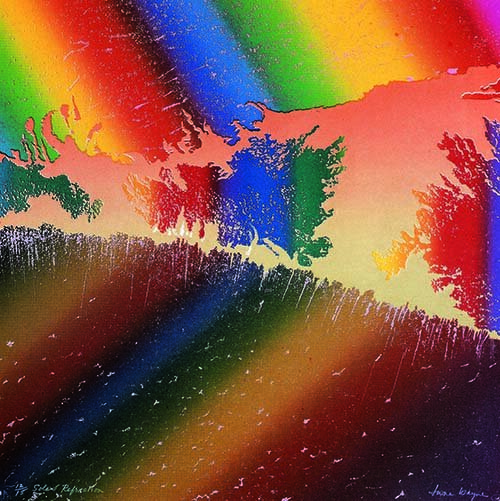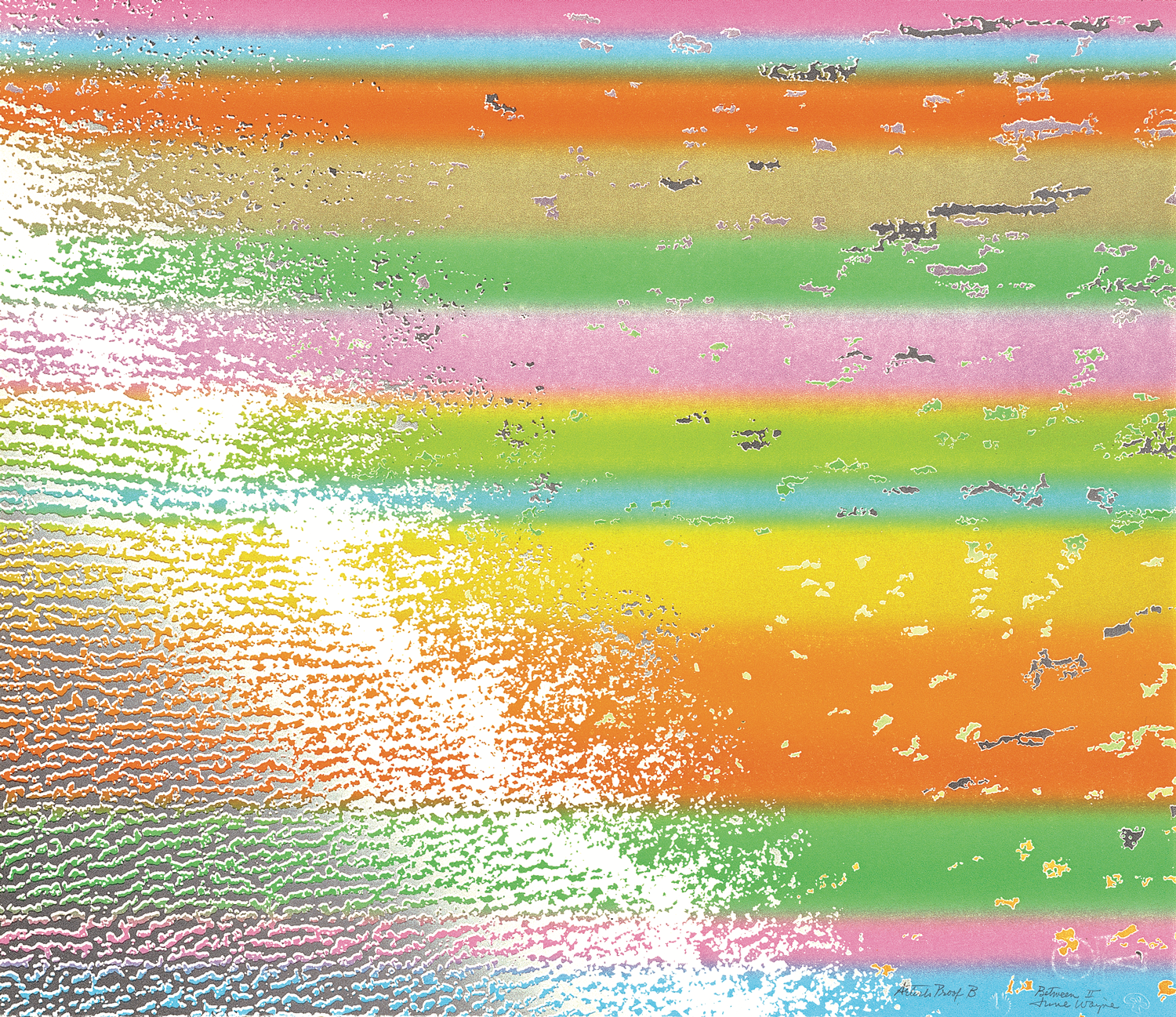JUNE WAYNE・Art & Science
The Celestial Works
Stellar Light
“‘We see the light that left a star eons ago, a star that probably no longer exists except in that traveling light.’ Light marks place and time and is Wayne’s most visible energy. A beam splintered in a prism can yield her red, golden, golden yellow, silver-white and blue surfaces.”
“In my work, I try to use what color in space might be like. My Solar Flares, for example, use intense yellow, white and pale complementaries that intensify yellow and white. We couldn’t look at the sun’s flares even if we could get close enough. It’s a blinding sight. In the final print of the Solar Flares suite which I call Solar Refraction, I use violet, green, orange, yellow and red, avoiding blue as much as possible. I do not feel obliged to say, ‘This is how it is.’ I’m creating metaphors; I’m not illustrating science.”
“In Solar Flares, Wayne introduced the compositional device of placing one field within another. This would characterize much of her work in lithography over the next five years. The scale of both fields is deliberately ambiguous—probably vast and immeasurable, yet possibly microscopic—and the boundaries between what we assume are separate planes are deliberately breached.”









